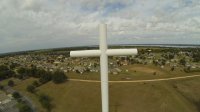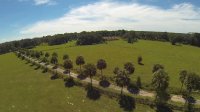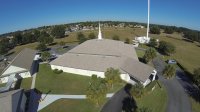I concur with Sapho relative to the amount of time I have put into doing the research, posting on forums, watching YouTube, manufacturers sites, etc. My specific flying experience, and modifications to see if it would work for my application was the AR Drone. I probably knew up front when I suggested the AR to santa that it was more of a toy and would not really work for me as a help with my job.
I have come to some conclusions and have a few questions:
1. Unless I'm mistaken it would appear the kits like the DJI F450 for instance offer very little if anything more then the Phantom 2 lets say. I would have thought that building a kit would have been cheaper then buying a RTF like the Phantom 2 but it seems just the opposite, am I missing something?
2. I appreciate there would be more options to consider with the F450 like longer arms, bigger motors, etc. but if the Phantom 2 with a gimbal would do the job relative to AP for less money, then why chose the F450 unless as was said your interest lie more in RC?
3. Relative to the Phantom Vision it seems again that this RTF would be cheaper even then the Phantom 2 w/gimbal and GoPro, albeit with a single axis gimbal. So again if the Vision would meet your AP needs then what would be the compelling reason to go with a kit?
Although the Phantom 2 and Vision are relatively new and sold as RTF there seems to be a significant number of upgrades, hacks, etc. for these quads, even though they are relatively new. There are already a few companies offering a 2 axis gimbals for the Vision. At the heart of the Vision you still have the NAZA M2, OSD, FPV, single axis gimbal, and a camera that compares favorable to the GoPro with remote tilt control and video with over a mile in range!
Kinda sounds like I'm talking myself into a Vision but I would still prefer to have what, 5.8Hz for video rather than the 2.4Hz WiFi. I would also like to be able to zoom my camera remotely and I have not found anyone who knows if the VP-Systems (
http://vp-systems.eu/camremote.html) module would work to control a low-cost point-and-shoot camera like my little Canon ELPH through the USB/CHDK method. Although the web site seems to indicate it would control it through an extra transmitter channel?
Does obviously have to do with what your trying to achieve with AP. In my case I'm looking for relatively low resolution photos to include in an inspection report relative to the condition of the roof. So for me it would be best to be able to "see" at the highest resolution on the ground as the quad is over the roof, take a perspective shoot and then zoom into a more specific defect shot. Or fly down closer to the roof, but it would be better to stand-off and zoom. So with zooming I would need little or no jello (2 axis gimbal). My other challenge would be the ability to "see" what the camera is seeing from the ground and what has been suggested would be a monitor with a sun shield on a tripod and the ability to quickly also look back at the quad.
Anyway anybody have answers to the questions posed above and/or knowledge of the VP-Systems device?



